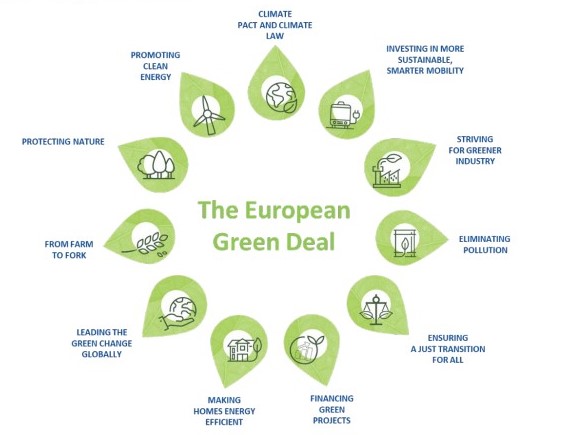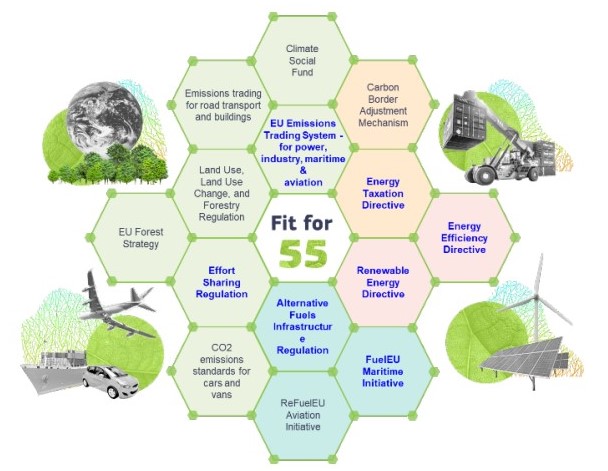The European Commission published study, in which it gathered and analysed available evidence on cruise tourism to support cruise stakeholders in moving forward on sustainability.
The study looks at the economic, social and environmental ‘as-is’, examined the most promising responses to the challenges, measured economic impact, and documented regulatory and non-regulatory environmental and social frameworks.
There are no one-size-fits-all solutions. There is uncertainty about cost and regulation. However, adopting clear environmental goals, circular economy principles, energy efficiency and fuel flexibility, and collaboration across the ecosystem are no-regrets measures that can be taken now
EU said.
As a selection of good practices demonstrates, there are practices across a range of cruise players that the industry can look to for learnings, ranging from Onshore Power Supply (OPS), LNG bunkering, sustainable cruise terminals, food waste reduction and waste treatment to a holistic approach to destination management.

The importance of taking future-proof decisions now
Future-proofing is urgent because stakeholders already face a major challenge in reconciling growth with the destination management, environmental and social challenges.
The growth means more and larger ships, adding to a risk of overtourism in some destinations. That risk is already a reality in a number of major cruise destinations, either from cruise tourism alone or from the combination of cruises and other tourism.
Overtourism brings with it environmental and social pressures at the destinations, with cruise vessel berths typically close to inhabited areas.
Many destinations are already struggling to cope with large numbers of cruise passengers during peak seasons – and struggling to find a balance between the interests of the cruise lines and local businesses to which they bring custom and local inhabitants’ resistance to the noise, the air pollution, the waste and the overcrowding of their town centres
In this landscape, ports can be critical enablers for the sustainability of the cruise industry. In some cases, provision of this infrastructure is driven by the regulatory requirements e.g. on the use of LNG or Onshore Power supplies.
Ports are also driving sustainability with incentives to good green practice through port fee abatement, environmentally friendly investments or practice which go beyond regulatory requirements, and innovation in the circular economy.
Like the rest of the ecosystem, they face challenges in infrastructure decision-making, however, from lack of regulatory certainty, high capital costs and uncertainty as to whether other players will make the necessary complementary investment.
Rising to the environmental and social challenges
In the short-to-medium term the use of LNG with scrubbers to remove the toxic emissions is a direction in which the industry is moving but is still based on fossil fuels, and is probably only a mitigation measure until non-fossil alternative fuels are available.
Connecting to an onshore power supply (OPS) is a technology that is available now. It cuts emissions in port, but is only truly energy-efficient if the power source is renewable.
It is also an archetypical example of cruise lines and ports needing to invest in parallel, as the investment costs are high.
Longer-term, there are options such as hydrogen and biofuels, including biomethanol, or switching to batteries, or drawing some auxiliary power from renewables, but the technologies are not yet mature enough for use on cruise ships, the future cost-benefit is uncertain, and it is not clear what choices regulators will make.
Similarly solutions exist to dealing with waste, both by producing less and by treating it better at sea and on land, but they are costly and far from universally deployed at present. They too work best when ports and the industry ecosystem as a whole are working hand-in-hand with the cruise lines.
Energy efficiency, Onshore Power Supply (OPS), and voyage and data optimisation measures are low-hanging fruit, but the industry cannot decarbonise based on these alone.
As a starting point the industry needs, where it has not done so already, to adopt clear environmental goals, adopt circular economy principles and step up collaboration across the ecosystem.
It needs to plan a phase-out of sulphur from fuels and develop low-emission fuels, develop fuel flexibility capabilities and roll out zero transmission technologies.
It also needs to promote good practice and innovation in waste management and accelerate the installation of supporting infrastructure and supply chains. These can all be considered ‘no-regrets’ measures.

Regulatory challenges
A further challenge for the cruise ecosystem is to keep abreast of evolving regulatory requirements and non-regulatory options.
Most areas are already regulated either by international conventions or by the EU, either because the EU has transcribed those into its own legislation or because it legislates in other areas, particularly on environmental and social standards.
This study nevertheless found gaps in regulation relating to food waste, which is a major concern for the cruise industry with its large numbers of passengers and crew relative to other shipping, grey water, under and overwater noise, black carbon, scrubber wash water, and mammal collisions.
Moreover, regulation on the environment is a moving target as governments keep up with the pace of technological change and, like the industry, tries to identify which way to head in the face of technological uncertainty.
Regulatory uncertainty against a background of the types of issue identified in this study is undoubtedly a major current challenge.
Non-regulatory measures in the form of guidelines or ecolabels from government entities, NGOs and the cruise industry, as well as third-party certification and incentive schemes provide a framework for those who want to go beyond the minimum.
These offer an opportunity to learn, to demonstrate good practice and to provide models for others to follow. But as with technology, the wealth of non-regulatory options illustrated in this study highlight a challenge in deciding which to follow.




























































